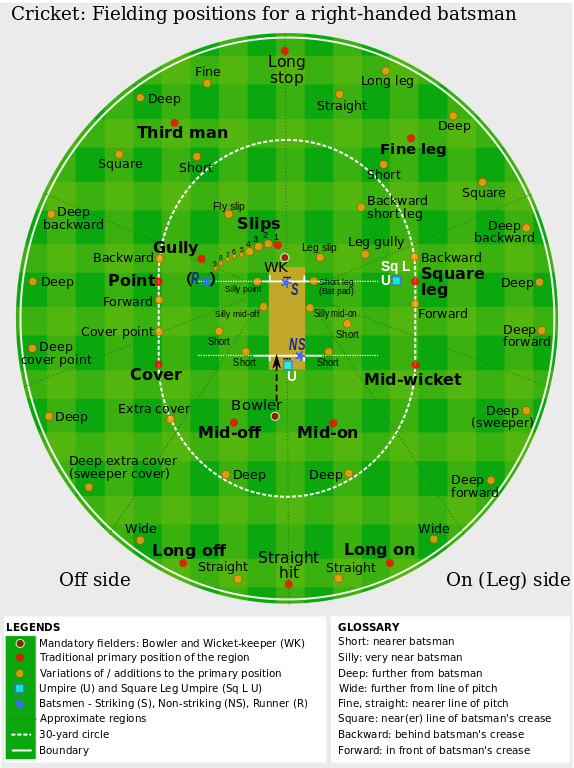Cricket explained
The second Test series between England and India is currently taking place in Southampton (it’ll be day 3 today. Ed.) and my radio is tuned to the epic poem that is the BBC’s Test Match Special from 10.25 until the close of play each day, with the likes of Aggers, Blowers, Tuffers and Geoffrey Boycott (posts passim) filling the air with their wise words and wit.
Cricket is a complex game that can take a long time to understand fully and I’m still occasionally baffled by the commentators. For the uninitiated, the many different laws and the strange names for positions on the field can seem overwhelming. For instance, which other game has a position on the field called ‘cow corner’*?.
Below is a simple explanation for the uninitiated, which I originally heard at school decades ago as a brief summary of the game for foreigners.
You have two sides, one out in the field and one in. Each man that’s in the side that’s in goes out, and when he’s out he comes in and the next man goes in until he’s out. When they are all out, the side that’s out comes in and the side that’s been in goes out and tries to get those coming in, out. Sometimes you get men still in and not out. When a man goes out to go in, the men who are out try to get him out, and when he is out he goes in and the next man in goes out and goes in. There are two men called umpires who stay out all the time and they decide when the men who are in are out. When both sides have been in and all the men have been out, and both sides have been out twice after all the men have been in, including those who are not out, that is the end of the game.
For those who need help with fielding positions, Wikimedia Commons has helpfully provided the following graphic.

Note that the fielding positions would be reversed for a left-handed batsman.
* Cow corner = the area of the field (roughly) between deep mid-wicket and wide long-on. So called because few ‘legitimate’ shots are aimed to this part of the field, so fielders are rarely placed there – leading to the concept that cows could happily graze in that area.









 The Open Rights Group’s Blocked Project
The Open Rights Group’s Blocked Project